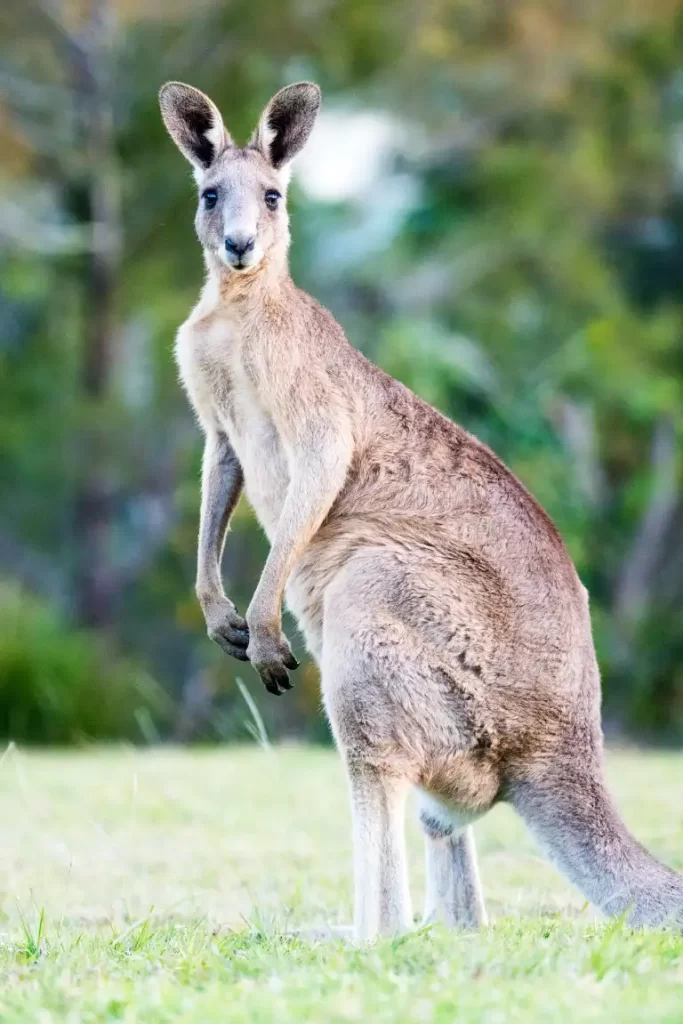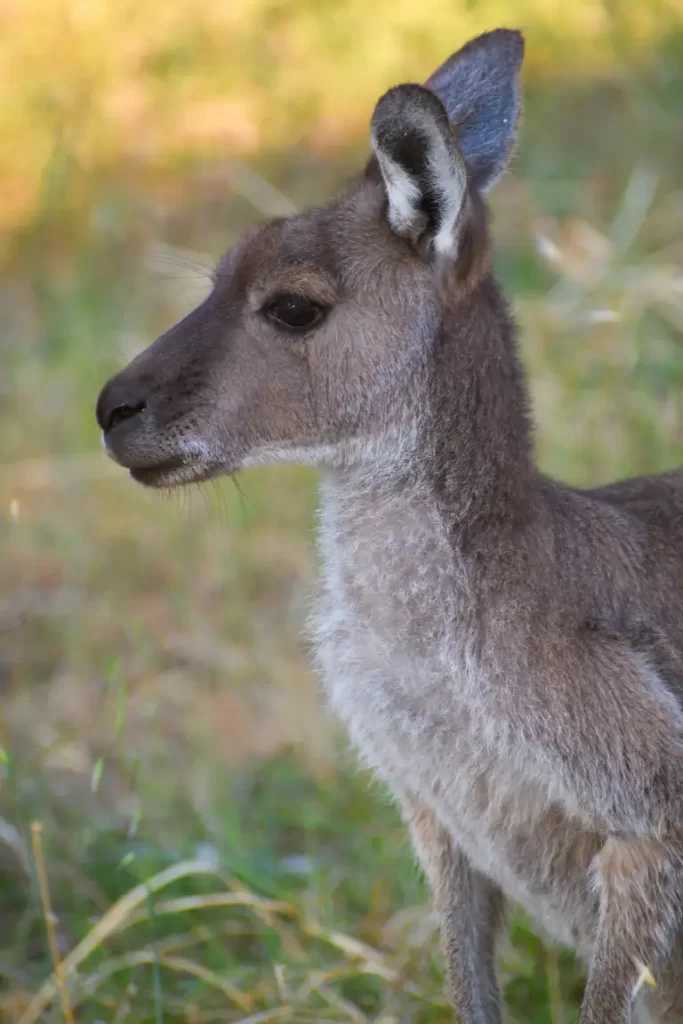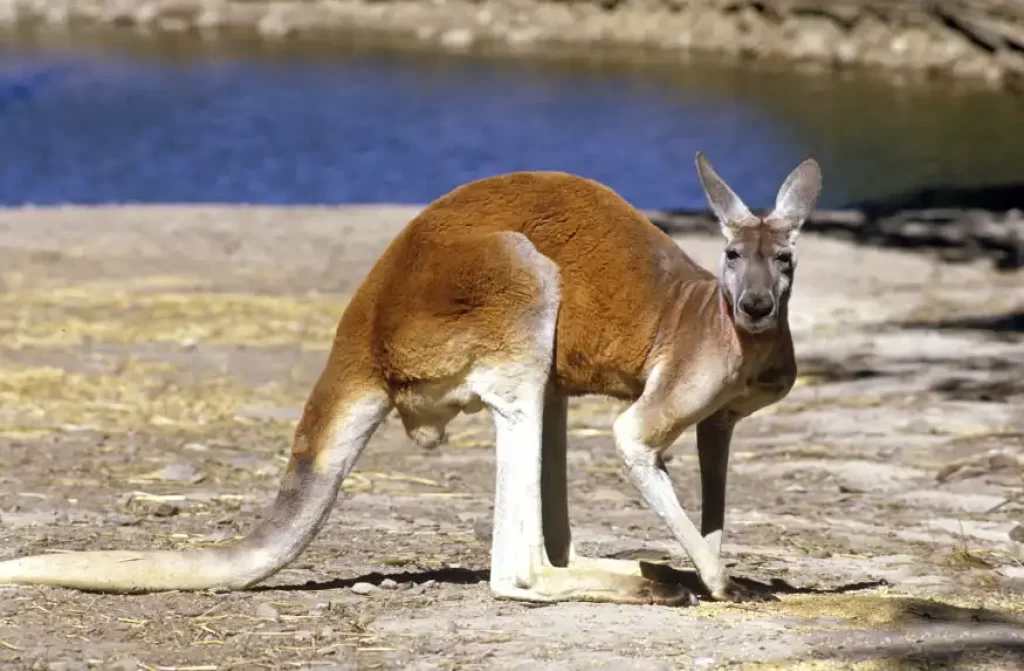Kangaroos are renowned for their impressive jumping abilities, allowing them to gracefully traverse their natural habitats with impressive agility. But just how high can these iconic marsupials soar into the air?
On average, a kangaroo can jump about 6 to 8 feet (1.8 to 2.4 meters) in height. However, it’s important to note that the actual jumping height can vary depending on factors such as the species of kangaroo, individual fitness, and environmental conditions.
When comparing the jumping abilities of other species, it’s fascinating to explore the diverse range of vertical propulsion found in the animal kingdom. For instance, the red kangaroo (the largest kangaroo species) can achieve jumps of up to 10 feet (3 meters) in height.
Other species like the Eastern grey kangaroo and the Western grey kangaroo have slightly lower jumping capabilities, ranging from 6 to 9 feet (1.8 to 2.7 meters) in height.
In this article, we will delve into the fascinating world of kangaroo jumping and explore the factors that contribute to their remarkable vertical leaps.
Anatomy and Adaptations for Jumping

Kangaroos have evolved a range of anatomical features and adaptations that contribute to their exceptional jumping abilities. These adaptations are finely tuned to optimize their performance and allow them to achieve impressive heights during their leaps.
Muscular Hind Legs
One of the key factors enabling kangaroos to jump high is their powerful and muscular hind legs. The hind limbs of kangaroos are significantly larger and stronger than their forelimbs, providing the primary force for propulsion during a jump.
The muscles in their hind legs, such as the quadriceps and gluteal muscles, are highly developed and capable of generating tremendous power.
Specialized Tendons and Elastic Energy Storage
Kangaroos have specialized tendons, such as the Achilles tendon, which connect their muscles to their bones. These tendons act as springs, storing elastic energy during the landing phase of a jump and releasing it during the push-off phase, propelling the kangaroo upward.
This energy-efficient mechanism allows kangaroos to minimize energy expenditure while maximizing the height of their jumps.
Long and Flexible Feet
The feet of kangaroos are uniquely adapted for jumping. Their elongated and flexible feet, combined with strong toe muscles and clawed digits, provide excellent grip and stability during takeoff and landing.
The flexibility of their feet allows them to absorb the impact of landing and maintain balance, while the strong claws help with traction on various surfaces.
Specialized Joints
Kangaroos possess specialized joints that contribute to their jumping prowess. Their ankle joints have a unique structure that allows for increased range of motion, enabling them to extend their legs fully during each leap.
Additionally, their knee joints are designed to lock into position, providing stability during landing and preventing excessive joint movement.
Efficient Body Shape
The body shape of kangaroos also plays a role in their jumping abilities. Their relatively small and lightweight upper bodies, coupled with their long and muscular hind limbs, allow for efficient weight distribution and leverage during jumps.
This streamlined body shape reduces air resistance, enabling kangaroos to propel themselves higher and farther with less effort.
By combining these anatomical features and adaptations, kangaroos have evolved into extraordinary jumpers. Their muscular hind legs, specialized tendons, flexible feet, unique joints, and efficient body shape all contribute to their ability to generate powerful leaps and achieve impressive heights during their jumps.
Can kangaroos jump over fences?
Yes, kangaroos are known for their exceptional jumping abilities, and they are capable of clearing fences in many cases. While the ability to jump over a fence depends on factors such as the height and type of the fence, kangaroos are renowned for their impressive vertical leaps.
Factors Influencing Jumping Height of a kangaroo

Several factors come into play when determining the maximum height a kangaroo can achieve during a jump. These factors encompass both intrinsic characteristics of the kangaroo itself and external environmental conditions. Let’s delve into the key factors that influence jumping height:
Body Size and Weight
The size and weight of a kangaroo have a direct impact on its jumping abilities. Generally, larger kangaroo species tend to have more substantial muscular strength and power, which can contribute to higher jumps.
The size and weight distribution of a kangaroo’s body also affect its balance and stability during takeoff and landing.
Speed and Momentum
Speed and momentum play a crucial role in a kangaroo’s jumping height. Kangaroos rely on building up speed and utilizing the momentum generated to launch themselves into the air.
The faster a kangaroo can run before initiating a jump, the greater the potential energy it can transfer into upward motion, resulting in a higher jump.
Muscle Strength
The strength and conditioning of a kangaroo’s muscles, particularly the muscles in its hind legs, are essential for generating the power required for high jumps.
Regular physical activity, including hopping and grazing, helps build muscle strength, enabling kangaroos to achieve greater heights during their jumps.
Environmental Factors
The environment in which a kangaroo jumps can impact its jumping height. Terrain, such as soft soil or rocky surfaces, can affect the kangaroo’s ability to push off the ground effectively.
Obstacles or uneven ground may also hinder the kangaroo’s takeoff and landing, potentially limiting its jumping height.
Physical Condition
The overall physical condition of a kangaroo, including its health, agility, and coordination, can influence its jumping performance. A kangaroo in optimal physical condition is likely to exhibit greater power, endurance, and control over its movements, which can contribute to higher jumps.
It is important to note that the maximum jumping height varies among different kangaroo species. For example, the Red Kangaroo (Macropus rufus), known as the largest kangaroo species, is capable of achieving remarkable heights in its jumps, reaching up to 10 feet (3 meters) in the air.
What is the highest a kangaroo has ever jumped?
The highest recorded jumps by kangaroos demonstrate their incredible leaping abilities. One notable instance involved a captive eastern grey kangaroo that cleared an impressive 8-foot (2.44 meters) fence in response to the sound of a car backfiring. Another remarkable record involves a red kangaroo being hunted, which managed to clear a stack of timber that measured 10 feet (3.1 meters) in height.
These extraordinary feats highlight the remarkable power and agility of kangaroos in overcoming obstacles and leaping to great heights. These records serve as a testament to the incredible physical capabilities of these iconic Australian marsupials.
Can kangaroos hop if you lift their tail off the ground?
No, kangaroos cannot hop if their tail is lifted off the ground. The tail of a kangaroo plays a crucial role in maintaining balance and stability during hopping. It acts as a counterbalance to the kangaroo’s body and assists in directional control. Lifting the tail off the ground disrupts this balance and hampers the kangaroo’s ability to hop effectively. The tail also provides support and acts as a pivot point for the kangaroo’s movement, so without proper tail contact with the ground, hopping becomes challenging for them.
You might also like
- What do Kangaroos Look like When They are Born?
- Human vs Kangaroo: Who Wins the Ultimate Fight?
- How Many Kangaroos are there in Australia?
- What do Kangaroos Eat in the Desert?
- Can Kangaroos Move Their Legs Independently?
- Kangaroos Can’t Walk Backwards: Myth or Fact?
Final thoughts

The impressive jumping abilities of kangaroos are a testament to their unique anatomical adaptations and physical prowess.
Through a combination of muscular hind legs, specialized tendons, and powerful joints, kangaroos have evolved to excel in vertical propulsion. Factors such as body size, speed, muscle strength, and environmental conditions all contribute to the maximum height a kangaroo can achieve during a jump.
These incredible adaptations allow kangaroos to navigate their natural habitats with agility and efficiency. Whether it’s leaping over obstacles, crossing uneven terrains, or evading predators, their remarkable jumping ability plays a vital role in their survival and daily activities.







